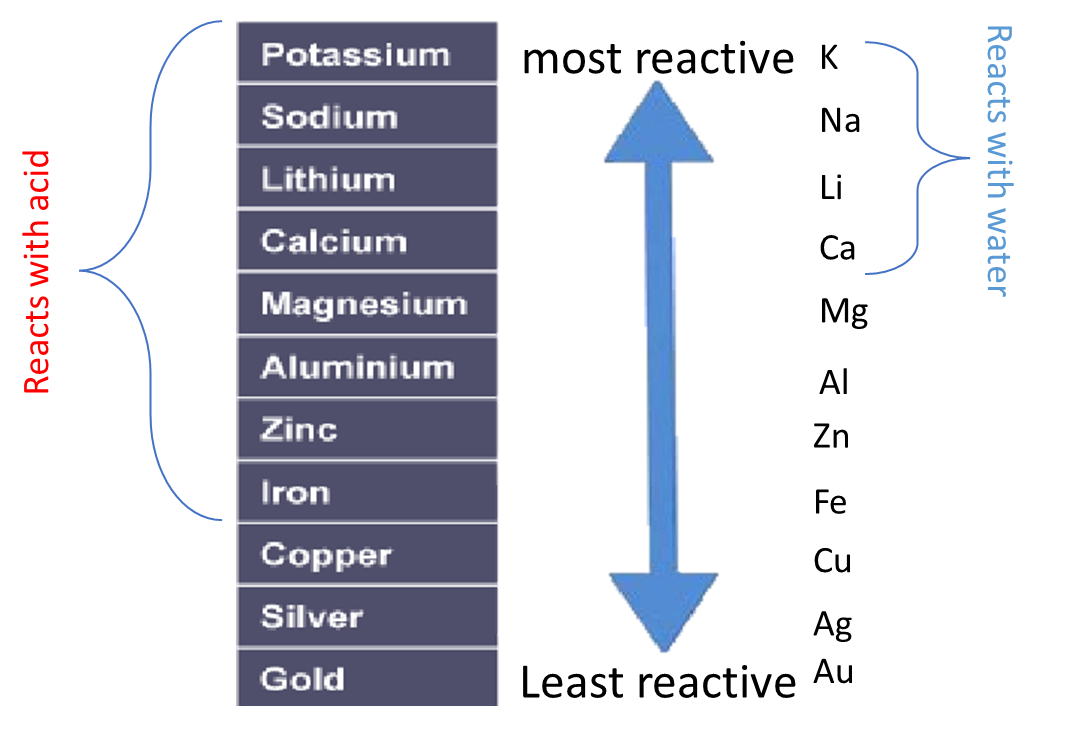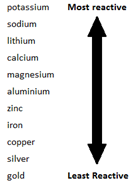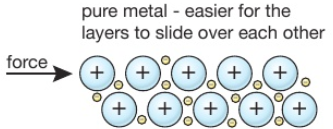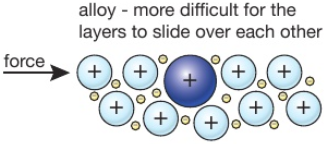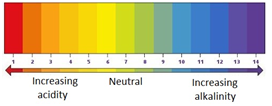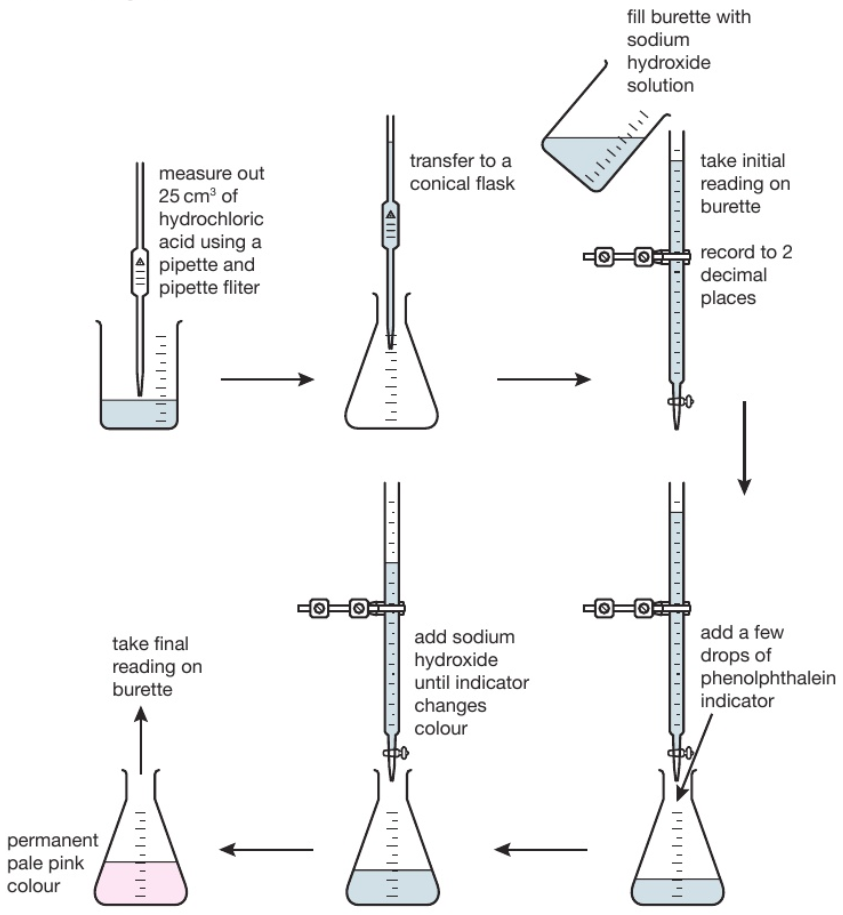2:02 understand how the differences between the reactions of lithium, sodium and potassium with air and water provide evidence for the trend in reactivity in Group 1
Lithium is the first element in group 1 of the Periodic Table. The observations for the reaction of lithium and water are:
- fizzing (hydrogen gas is released)
- lithium floats and moves around on the water
- lithium disappears
Sodium is the second alkali metal in the group. The reaction of sodium and water is more vigorous than lithium’s:
- fizzing (hydrogen gas is released)
- sodium floats and moves around on the water
- sodium melts into a silver-coloured ball
- sodium disappears
Potassium is the third alkali metal in the group. The reaction of potassium and water is more vigorous than sodium’s:
- fizzing (hydrogen gas is released)
- potassium floats and moves around on the water
- catches fire with a LILAC flame
- potassium disappears
When the group 1 metals react with air they oxidise, showing a similar trend in reactivity as we go down the group of the Periodic Table.
Therefore, as we go down group 1 (increasing atomic number), the elements become more reactive: Li<Na<K<Rb<Cs<Fr

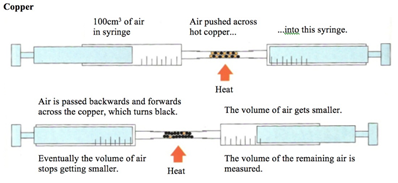

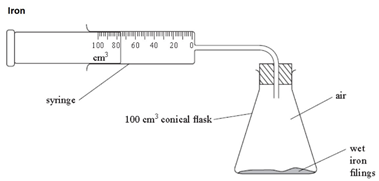

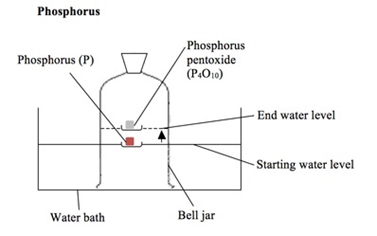


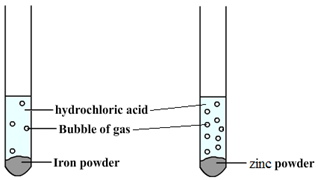 Some metals are more reactive than others.
Some metals are more reactive than others.